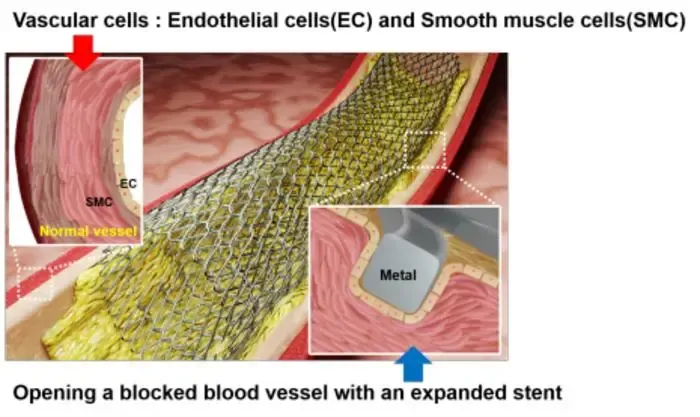Innovative Laser Patterning Technology Set to Transform Stent Surgery for Cardiovascular Conditions

New Delhi, Dec 26 (NationPress) A cutting-edge stent surface treatment technique that employs laser patterning is poised to change the landscape of heart disease surgeries, according to a study released on Thursday.
Conventional metal stents often lead to restenosis – the re-narrowing of arteries – caused by excessive smooth muscle cell proliferation one month post-implantation. Nevertheless, this groundbreaking stent surface technology effectively regulates vascular cell responses without the adverse effects associated with drugs.
Created by researchers at the Korea Institute of Science and Technology (KIST), this technology fosters endothelial cell growth while mitigating smooth muscle cell dedifferentiation within blood vessels.
This advancement shows promise for improving vascular recovery, particularly when used in conjunction with chemical coating techniques.
“This research illustrates the capabilities of surface patterns to selectively regulate vascular cell responses without relying on drugs,” stated Dr. Hojeong Jeon from KIST.
“By utilizing widely industrialized nanosecond lasers, we achieve precise and rapid stent surface processing, resulting in remarkable benefits for commercialization and operational efficiency,” Jeon added.
The research team implemented nanosecond laser texturing technology to create nano- and micro-scale wrinkle patterns on surfaces made of nickel-titanium alloy.
While stent-induced vascular wall damage triggers the migration and morphological alteration of smooth muscle cells, the introduced wrinkle patterns significantly slowed this process, effectively preventing restenosis. Additionally, the wrinkle patterns enhance cellular adhesion, facilitating re-endothelialization to restore the vascular lining.
The effectiveness of this technology was confirmed through in vitro vascular cell experiments and ex vivo angiogenesis assays utilizing fetal animal bones.
The laser-textured metal surfaces established favorable conditions for endothelial cell proliferation while successfully suppressing smooth muscle cell dedifferentiation and excessive growth.
Remarkably, smooth muscle cell growth on the wrinkled surfaces was decreased by approximately 75 percent. Conversely, angiogenesis witnessed an increase of over two-fold.
The surface patterning technology is anticipated to extend its applications beyond metal stents to include biodegradable stents, according to the researchers.
In biodegradable stents, the patterns not only inhibited restenosis but also enhanced endothelialization prior to dissolution. This advancement is expected to improve treatment outcomes and lower the risk of complications, with plans for animal testing and clinical trials on the horizon.










